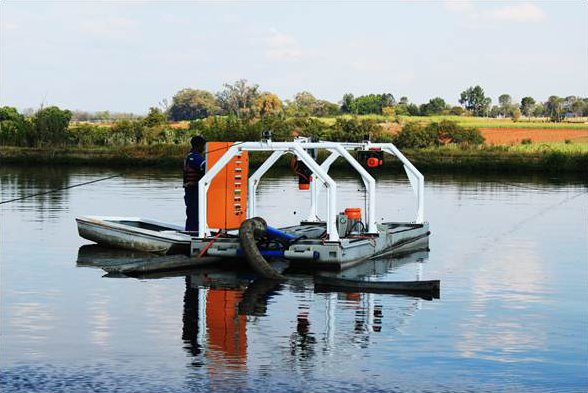
Dredging is the act of removing silt and other material from the bottom of bodies of water. As sand and silt washes downstream, sedimentation gradually fill channels and harbors. … Dredging is the removal of sediments and debris from the bottom of lakes, rivers, harbors, and other water bodies.
Dredging is the removal of sediments and debris from the bottom of lakes, rivers, harbours, and other water bodies. It is a routine necessity in waterways around the world because sedimentation, the natural process of sand and silt washing downstream, gradually fills channels and harbors.
A Dredger is a machine used to “dredge” or clear waterways, ports, harbours or any other waterway of silt, sand or any other debris that may impede maritime travel.
The principal feature of all dredgers in this category is that the loosened material is raised from its in-situ state in suspension through a pipe system connected to a centrifugal pump.
Various means can be employed to achieve the initial loosening of the material. If it is naturally very loose, suction alone may be sufficient, but firmer material may require mechanical loosening or the use of water jets.
Hydraulic dredging is most efficient when working with fine materials, because they can easily be held in suspension. Coarser materials – and even gravel – can be worked but with a greater demand on pump power and with greater wear on pumps and pipes.
Dredging carried out to create a new harbour, berth or waterway, or to deepen existing facilities in order to allow larger ships access. Because capital works usually involve hard material or high-volume works, the work is usually done using a cutter suction dredge or large trailing suction hopper dredge; but for rock works, drilling and blasting along with mechanical excavation may be used.
Dredging to deepen or maintain navigable waterways or channels which are threatened to become silted with the passage of time, due to sedimented sand and mud, possibly making them too shallow for navigation. This is often carried out with a trailing suction hopper dredge. Most dredging is for this purpose, and it may also be done to maintain the holding capacity of reservoirs or lakes.
CONSTRUCTION AND RECLAMATION – to provide construction materials like sand, gravel, shell and clay
BEACH NOURISHMENT – to provide fill material to restore beaches that have suffered from erosion or any form of storm damage
FLOOD CONTROL – to improve or maintain the discharge and flow of rivers, channels and other waterways by maintaining, increasing or realigning watercourses or by constructing control structures such as dams, dikes or levees.
OFFSHORE ENERGY – to level the seabed for underwater foundations upon which oil and gas platforms and monopiles for windmills at sea are placed, as well as laying pipelines, cables and tunnels and backfilling them with rock for stability.
ENVIRONMENTAL REMEDIATION – to remove or remediate underwater pollutants to improve water quality.
MINING – to recover minerals, gems, precious metals and fertilisers, or to remove the overlying material to reach such deposits.
GENERAL – to maintain irrigation canals and reservoirs and other water infrastructure that are crucial to conserve scarce fresh water supplies.
A pump system sucks up a mixture of sand or soil and water, and discharges it in the hopper or hold of the Dredger or directly onto a designated unloading site.
Dredging is often associated with pollution, contaminated soils, CO2 emissions or other negative environmental impact. Yet, the positive perspective and nature improvements dredging can achieve are often overlooked.
